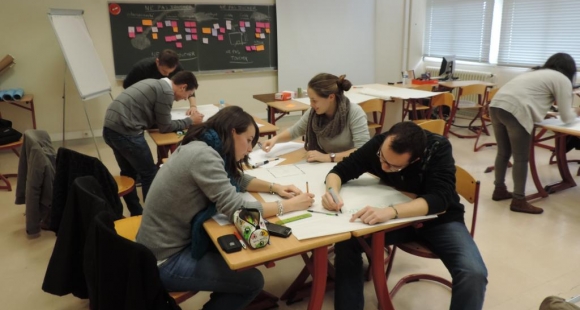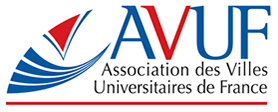
The Applied Law Approach
The Paris Bar School (EFB) is changing course in 2014 under the guidance of its new leadership team. We spoke with EFB board chair and bar council vice-chair Laurent Martinet and EFB director Jean-Louis Scaringella
Why did you decide to overhaul EFB?
LM: The chair and I do not want to set a cap on the Paris bar and shut it off from the world. Instead, we changed the program in order to better prepare students for the workplace.
You said you want to make EFB into “the school of applied law.” Please explain.
JLS: Our students all studied law at university. We teach them how to use that knowledge to defend clients. Instead of reviewing the basics, we now conduct a thorough assessment upstream. If students need help, we recommend reading material and e-learning resources.
LM: We wanted our program to reflect today’s market. The profession is expanding and half of every class ends up working in-house at a company within five years of graduating.
Describe your efforts to make EFB more international.
LM: First we developed EFB’s research capacities, on Bernard Ramanantsoa’s recommendation. In February 2014, we started a foundation for all of the research conducted by the Paris bar, which allowed us to sign agreements with universities in places like Shanghai, Delhi and Bangalore. Now we are ready to join the Shanghai Ranking.
Entrepreneurs in the Making
Fostering innovation and entrepreneurship is a priority for many engineering schools. The École des Mines d’Alès (EMA) has gone one step further, making these values the hallmarks of its curriculum.
EMA’s first-year students start with an innovation seminar followed by a group creativity challenge. Students tackle a problem faced by a specific company, which then awards a prize for the best solution. The program closes with a field assignment.
EMA president Bruno Goubet explains, “We teach innovation because economic development is important to us. All of our students participate in the innovation program, which combines marketing, technology, design and management. There is even an “organized chaos” phase that comes as a shock to new students.”
Companies hold the program in high regard and several have become repeat customers. Decathlon, for example, gets new product ideas from EMA students, who are bound by strict confidentiality clauses.
Another unique EMA program, Cap’Idé, sends student consultants to companies to advise them over a year and a half on problem identification, strategy, intellectual property, project management and research. The €3,200 price tag is relatively modest, thanks to funding from French and European authorities. Over the last three years, roughly 40 companies have seized this opportunity.
A Quest to Understand Innovation
Marcel Morabito spent eight years visiting the globe’s most cutting-edge sites for the French Atomic Energy and Alternative Energy Commission (CEA). We met with him to discuss his book, Research and Innovation: Choosing Political Strategies.
How did you pick the sites?
We focused on micro/nanotechnology centers, emerging countries, research post-crisis and ties between academia and industry. Nowadays, radical transformations can happen in a matter of months.
Please describe these “innovation ecosystems.”
In ecology, beneficial evolution can only happen when different elements interact. In order to create jobs and growth, universities, public research agencies, companies and governments have to collaborate.
Why is it so hard to reproduce a successful ecosystem?
The main reason is cultural. Stanford alone has produced 40,000 start-ups. When intellectual and financial capital combine with entrepreneurism, innovation abounds. Also, failure is embraced there and seen as a necessary setback. That mindset is impossible to reproduce.
You wrote that the economic crisis has actually benefited these ecosystems.
Everyone said that the crisis had produced progress. Now the focus is on creativity, solidarity and innovation. Despite the crisis, many countries have invested in research and innovation in anticipation of the economic recovery.






